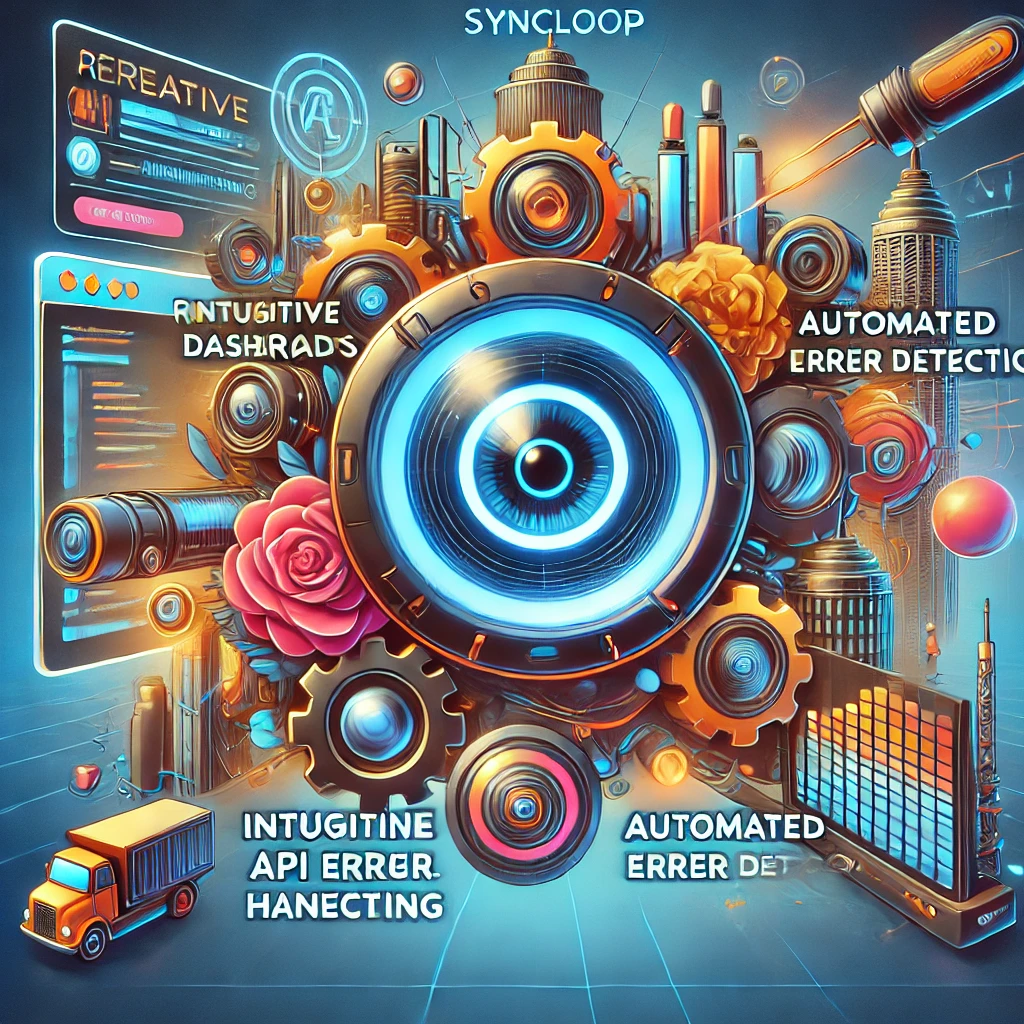Integrating GraphQL APIs with Syncloop's Toolset

This blog explores how Syncloop empowers developers to integrate and manage GraphQL APIs effectively, unlocking the full potential of this dynamic query language.
Benefits of GraphQL for API Development
- Precise Data Retrieval: Fetch only the required data, reducing payload sizes.
- Single Endpoint: Consolidates multiple API requests into a single query.
- Improved Flexibility: Adapts easily to diverse client requirements.
- Real-Time Updates: Supports subscriptions for live data updates.
- Efficient API Evolution: Adds new fields and types without breaking existing clients.
Challenges in Integrating GraphQL APIs
- Complex Query Execution: Handling deeply nested queries efficiently.
- Schema Management: Keeping schemas updated and versioned.
- Performance Optimization: Balancing query complexity with response times.
- Security: Protecting against over-fetching, under-fetching, and malicious queries.
- Monitoring and Debugging: Tracking query performance and identifying bottlenecks.
How Syncloop Simplifies GraphQL API Integration
1. Schema Management
Syncloop simplifies the design, deployment, and evolution of GraphQL schemas.
- Features:
- Intuitive schema definition tools for quick setup.
- Support for schema stitching to combine multiple schemas.
- Benefits:
- Speeds up schema development and maintenance.
- Supports modular and scalable API architecture.
- Use Case: Integrating a GraphQL schema for user management with another for billing.
2. Efficient Query Execution
Syncloop ensures optimal execution of complex GraphQL queries.
- Features:
- Query optimization tools to handle nested and large queries.
- Dynamic batching for reducing redundant data fetches.
- Benefits:
- Improves performance for high-traffic APIs.
- Reduces latency and enhances client responsiveness.
- Use Case: Optimizing queries for a multi-tier product catalog in an e-commerce application.
3. Security Enhancements
Syncloop provides robust security measures for GraphQL APIs.
- Features:
- Depth and complexity limits to prevent abusive queries.
- Query whitelisting to allow only approved operations.
- Benefits:
- Protects APIs from malicious queries and data over-fetching.
- Ensures consistent and secure data delivery.
- Use Case: Enforcing query depth limits in a GraphQL API for a financial dashboard.
4. Real-Time Subscriptions
Syncloop enables real-time data updates via GraphQL subscriptions.
- Features:
- WebSocket support for live data streaming.
- Integration with event-driven architectures for dynamic updates.
- Benefits:
- Delivers up-to-date information seamlessly to clients.
- Enhances user engagement with real-time features.
- Use Case: Streaming live stock price updates to a trading app.
5. Performance Monitoring
Syncloop provides tools to monitor and optimize GraphQL performance.
- Features:
- Dashboards for tracking query execution times and errors.
- Alerts for anomalies in query performance.
- Benefits:
- Enables proactive resolution of performance bottlenecks.
- Improves API reliability and user satisfaction.
- Use Case: Monitoring slow queries in a content management system’s GraphQL API.
6. Seamless Integration
Syncloop simplifies connecting GraphQL APIs with existing systems.
- Features:
- Pre-built connectors for databases and third-party APIs.
- Data transformation tools for consistent integration.
- Benefits:
- Reduces development time and complexity.
- Enhances compatibility with legacy systems.
- Use Case: Integrating a GraphQL API with a relational database for real-time reporting.
7. Scalable Infrastructure
Syncloop ensures that GraphQL APIs scale effortlessly with growing demands.
- Features:
- Auto-scaling to handle traffic spikes.
- Load balancing for distributing queries across multiple nodes.
- Benefits:
- Maintains performance during peak loads.
- Adapts to business growth seamlessly.
- Use Case: Scaling a GraphQL API for a global streaming platform during a live event.
Best Practices for Integrating GraphQL APIs with Syncloop
- Design Thoughtful Schemas: Create intuitive and modular schemas for scalability.
- Optimize Query Depth: Use Syncloop’s tools to manage query complexity.
- Secure APIs: Implement query limits and whitelisting for enhanced security.
- Monitor Continuously: Use real-time analytics to track performance and identify issues.
- Integrate Seamlessly: Leverage Syncloop’s connectors for unified API ecosystems.
Real-World Applications
1. E-Commerce
- Use Case: Building a GraphQL API for dynamic product recommendations.
- Benefit: Enhances personalization and user satisfaction.
2. SaaS Platforms
- Use Case: Consolidating multiple REST endpoints into a single GraphQL schema.
- Benefit: Simplifies client-side development and reduces API complexity.
3. FinTech
- Use Case: Providing real-time financial insights through GraphQL subscriptions.
- Benefit: Improves decision-making with live data updates.
4. Healthcare
- Use Case: Enabling flexible data retrieval for patient records and analytics.
- Benefit: Enhances care delivery and operational efficiency.
5. Media and Entertainment
- Use Case: Streaming live event data to viewers via GraphQL APIs.
- Benefit: Engages audiences with real-time content delivery.
The Future of GraphQL with Syncloop
Syncloop is enhancing its GraphQL capabilities with:
- AI-Powered Query Optimization: Automating schema and query enhancements.
- Edge Computing Support: Reducing latency with localized GraphQL operations.
- Advanced Subscription Tools: Enhancing real-time features with scalable solutions.
Conclusion
GraphQL APIs offer unparalleled flexibility and efficiency for modern applications, and Syncloop takes their potential to the next level. With tools for schema management, query optimization, real-time subscriptions, and robust security, Syncloop makes integrating and scaling GraphQL APIs effortless.
By leveraging Syncloop, developers can build high-performance, secure, and scalable GraphQL APIs that deliver exceptional user experiences and drive innovation.
An infographic showcasing Syncloop-powered GraphQL APIs, highlighting schema management, real-time subscriptions, and performance monitoring for seamless integration.
Back to Blogs